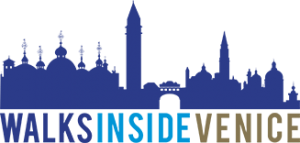NEWS ARCHIVE
 VITTORE CARPACCIO’S EXHIBITMarzo 21, 2023 - 12:28 pm
VITTORE CARPACCIO’S EXHIBITMarzo 21, 2023 - 12:28 pm A NEW START FOR MURANO GLASSFebbraio 1, 2023 - 3:24 pm
A NEW START FOR MURANO GLASSFebbraio 1, 2023 - 3:24 pm ENJOY VENICE AT CHRISTMAS TIMEDicembre 15, 2022 - 11:27 am
ENJOY VENICE AT CHRISTMAS TIMEDicembre 15, 2022 - 11:27 am WHAT NEWS FROM SAN MARCO?Dicembre 13, 2022 - 8:06 pm
WHAT NEWS FROM SAN MARCO?Dicembre 13, 2022 - 8:06 pm AI WEIWEI IN VENICEAgosto 11, 2022 - 5:53 pm
AI WEIWEI IN VENICEAgosto 11, 2022 - 5:53 pm MARLENE DUMAS OPEN-ENDLuglio 21, 2022 - 6:10 pm
MARLENE DUMAS OPEN-ENDLuglio 21, 2022 - 6:10 pm ANISH KAPOOR AT THE GALLERIEAprile 19, 2022 - 7:27 pm
ANISH KAPOOR AT THE GALLERIEAprile 19, 2022 - 7:27 pm HOMO FABER IS BACK!Aprile 1, 2022 - 7:12 pm
HOMO FABER IS BACK!Aprile 1, 2022 - 7:12 pm UPCOMING EXHIBITS SPRING 2022Marzo 25, 2022 - 10:03 pm
UPCOMING EXHIBITS SPRING 2022Marzo 25, 2022 - 10:03 pm VENICE 1600 YEARS OF BIRTHS AND REBIRTHSSettembre 24, 2021 - 10:56 am
VENICE 1600 YEARS OF BIRTHS AND REBIRTHSSettembre 24, 2021 - 10:56 am THE GLASS ARKSettembre 17, 2021 - 12:54 pm
THE GLASS ARKSettembre 17, 2021 - 12:54 pm BASELITZ AT PALAZZO GRIMANILuglio 20, 2021 - 10:04 pm
BASELITZ AT PALAZZO GRIMANILuglio 20, 2021 - 10:04 pm FONDAZIONE PRADA: A NEW EXHIBITAprile 21, 2021 - 10:43 am
FONDAZIONE PRADA: A NEW EXHIBITAprile 21, 2021 - 10:43 am UPCOMING EXHIBITS IN VENICELuglio 4, 2020 - 10:51 am
UPCOMING EXHIBITS IN VENICELuglio 4, 2020 - 10:51 am “FROM TITIAN TO RUBENS”Gennaio 13, 2020 - 11:01 am
“FROM TITIAN TO RUBENS”Gennaio 13, 2020 - 11:01 am
November 13th. 2016
VENICE, THE JEWISH GHETTO An important exhibition is on at the Doge’s Palace in Venice, it will continue until November 13th, commemorating 500 years from the establishment of the Ghetto of Venice.
The Venetian Republic found convenient keeping the Jews in town, in particular the Ashkenazi group was a convienent “ATM machine” whenever there was an immediate necessity for fund raising, while the Sephardic nations (Ponentine, from Spain and Portugal, and Levantine, arriving from the Ottoman Empire)proved to be (with Daniel Rodriga in particular) a well organized net of international merchants, in the age in which Venetians started to invest their capital and energies in less risky activities.
The major contribution to the cultural life of Venice was the publishing of a great number of books in Hebrew. Daniel Bomberg, a Christian merchant from Antwerp, thanks to the precious help of Felice da Prato, gave life to a very successful printing press by 1515, and later on the activity was continued on a more commercial plan by Venetian nobles.
The exhibition, curator Architect Donatella Calabi, gives great attention to the development of the Ghetto’s three different areas, called respectively Nuovo, Vecchio and Novissimo, pointing the accent at the very special peculiarities of the buildings, in good part still in existance and still inhabited today, tall and narrow, low ceilinged, due to the necessity of concentrating a large population into a cramped space.
Jacopo de’Barbari’s famous map of Venice (1500) provides a precious instrument to locate the different foreign communities’ settlements in the already dense urban texture of Renaissance Venice.
An interactive reconstruction of the former Rialto Bridge, a wooden structure with shops, and of the surrounding market areas, helps the visitor to revive the atmosphere ofm what was defined ‘the Wall Street of Europe of the Middle Ages’.
The exhibit also surveys the artistic heritage of the Ghetto, with its five ‘Scuole’ or Synagogues, lavishly decorated and still visible today (two of them are regularly used by the appr. 450 Jews living in Venice, in good part descending from those that built them in the 16th and in the 17th centuries).
A few outstanding silver objects (Torah Crowns, Rimmonim, prayer book bindings), some precious velvets (Parokhiot, Meilim) and a selection of colorful Ketubot (wedding contracts) invite us to continue our discovery of Jewish Venice directly into the Ghetto itself, easy to reach as it is, located few minutes away from Venice train station, in the bustling area of Cannaregio.
WALKS INSIDE ITALY
San Polo 1541 30125 VENICE, ITALY
C.F. e P. Iva 04331170276
Prot. 2016/16140 del 25-2-2016
Polizza Europ Assistance 8957877
ART CITY WALKS
affiliato al Network Gruppo Info Vacanze di Walks Inside Italy Snc
Sede Legale: San Polo, 1541
30125 Venice, Italy
Sede Operativa: Via Volta n.13
30020 Marcon (Ve), Italy
Tel 041 2750687 – Fax 041 5956807

